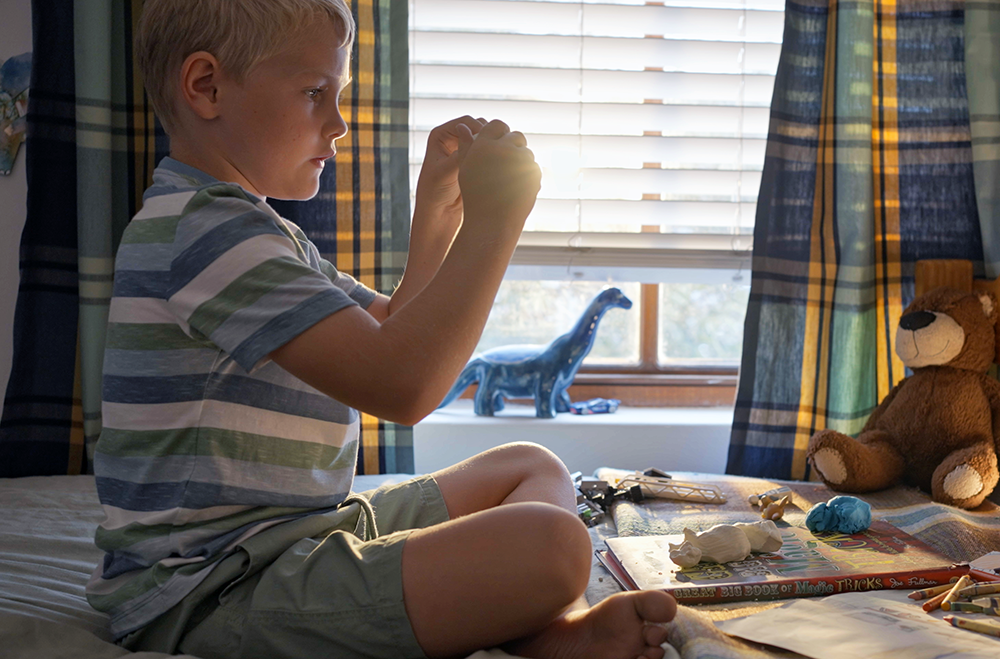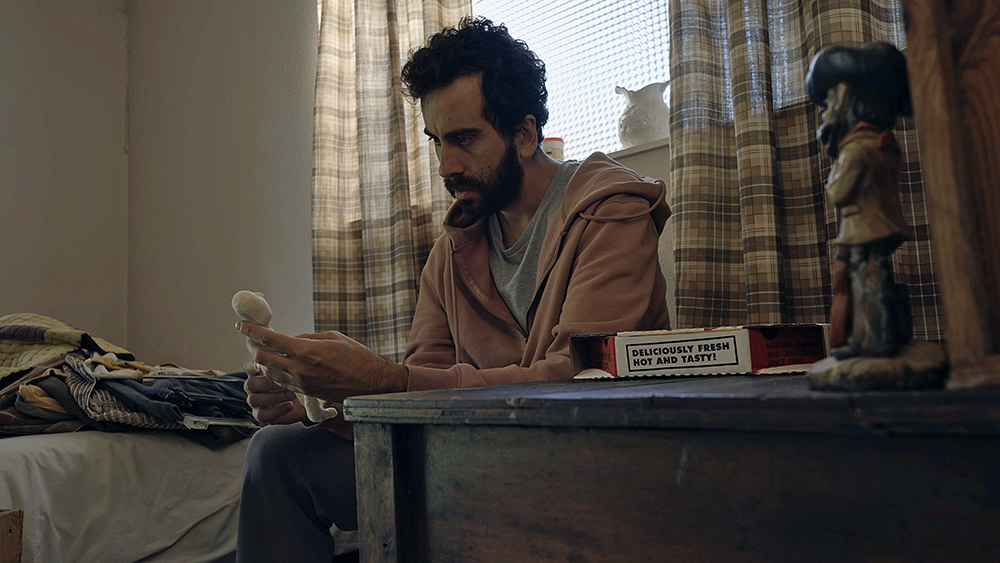


Shotgun short film: Die boodskapper
A little boy’s tears bring a tiny man, made of modelling clay, to life in Paul Crafford’s short film, Die boodskapper, this year in the Shotgun Shorts category of the Silwerskerm Festival.
Single frame animation is combined with traditional filmmaking in this 12-minute movie that tells the story of a young boy, Jake (Liam Kruger), who finds himself caught in the middle of a ferocious conflict between his parents, Susan (Izaan du Toit) and Frank (Emile Hager).
Author and director Paul Crafford, also a versatile content developer, talks more about the film.
What inspired you to write Die boodskapper?
It was a lockdown project. During that period, I started writing a bit while also experimenting with clay animation. I then abandoned the project and didn’t really look at it again. But last year, when I attended the Silwerskerm Festival, I heard about the Shotgun Shorts category and I thought, ‘Let’s give it a shot.’
What are the challenges in terms of storytelling when it comes to short films?
My movie is only 12 minutes long, and what I realised was that you only have a moment to capture somebody’s heart. That is the biggest challenge with this type of film: how to make someone feel something in a very short time. I think, with a short film like this, it is difficult to paint a comprehensive picture. You have no choice but to pick the lines you want to keep, and to omit those for viewers to fill in themselves. In the end, we all make up our own minds about the characters.
You were involved in the entire process, from conceptualisation to writing, directing, animation and cinematography. What does it feel like to see your imprint on the entire creative process?
I was very close to the project; with ventures of this kind, you have to make do with the resources at your disposal. The budget didn’t allow for unlimited access to animation artists and post-production teams. It was a valuable learning experience.
Sometimes I just had to walk away for a while in order to get closer to the essence of the story. I am very proud of my visual imprint on the movie. Many of the scenes and sequences came out just as I had imagined it. Some of them even a bit better. I am very proud of our small little movie.
How did you experience working with Liam Kruger as a child actor?
He is an accomplished young actor, and he was very professional. I was slightly hesitant about writing for a child actor in case I wouldn’t find a perfect fit for the role, but in retrospect, I am rather sorry that I didn’t write a bit more with Liam in mind specifically.
The body and face of the clay character is rather plain, but the character conveys so much emotion. How did you manage to get it right?
The simplicity is exactly what counted in the little clay man’s favour. It’s easier to project your own emotions on something that is perhaps less pretentious. I think the medium – stop or clay animation – is in its very nature magical already, because you take something immobile and bring it to life by taking a series of photographs. And people notice it, I believe. The clay fellow’s simplicity was therefore strategic. I never wanted him to be too pretty.
Have you worked with stop animation before?
I have used stop animation techniques previously in some of the advertisements I have produced, but I was really an amateur when I started working on this film. I have been interested in stop animation for a while, though, and wanted to do something with it one day.
I watched a lot of YouTube videos, experimented extensively and made mistakes. Lindsay van Blerk, an animation artist from Cape Town who works on similar projects, gave me good advice. I spent a day in his studio, watched what he was doing and asked many questions. The process requires a lot of patience.
Is there any team member you would like to single out?
Jana-Marie Hay was the production designer of the movie, but she was involved with the process from the start. We were both at last year’s Silwerskerm Festival and she suggested that I enter for this year’s Shotgun Shorts section. She helped me to write the screenplay and was a huge asset during production.
The whole technical team was fantastic. I thoroughly enjoyed working with them. They all gave their best to help us succeed in making a wonderful little movie.
How do you see the role of the Silwerskerm Festival in helping this type of film reach the big screen and stimulating experimentation in Afrikaans?
The festival provides an excellent platform for upcoming filmmakers to tell their stories, showcase their talents and to play around with new concepts and ideas. Sometimes it can be overwhelming when you want to make a movie and there’s no funding available. An event like Silwerskerm is therefore important. For Afrikaans also.
